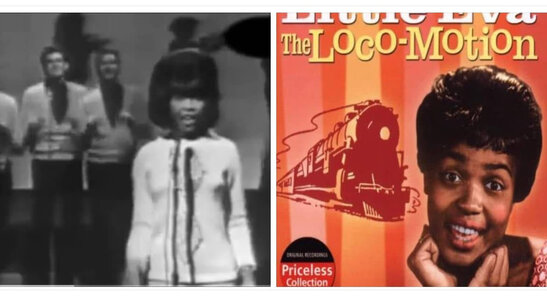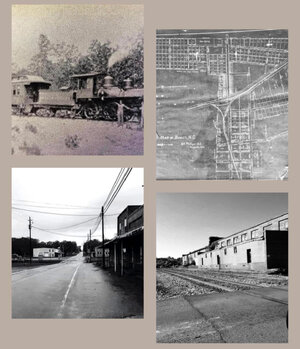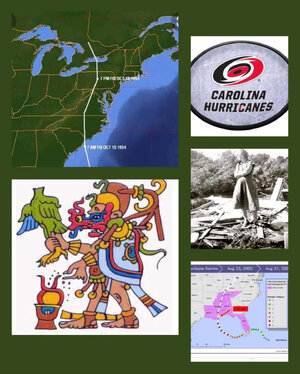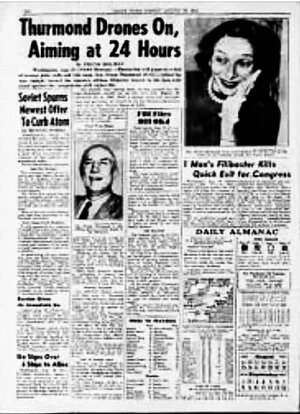- Messages
- 1,482
Sorry. You contribute so much to this board and I contribute so little that actually has merit, I should have just kept my mouth shut. My apologies.Alas you are correct. I did "let my hair down" for a moment. My apologies.
Follow along with the video below to see how to install our site as a web app on your home screen.
Note: This feature may not be available in some browsers.
Sorry. You contribute so much to this board and I contribute so little that actually has merit, I should have just kept my mouth shut. My apologies.Alas you are correct. I did "let my hair down" for a moment. My apologies.
LOL...brother, close readers are a blessing.Sorry. You contribute so much to this board and I contribute so little that actually has merit, I should have just kept my mouth shut. My apologies.



And New Orleans has never fully recovered. But then neither did Galveston. But Charlotte did from Hugo.
Walking through the pastures and woods on my Grandpa’s farm where my Deddy grew up and kept his cows — counting them and checking fences — there were always old and grizzled great giant trees uprooted and stretching almost horizontal across the ground. They had been felled while healthy and the way that their roots were exposed created openings into the dark, damp underworld. I’d jump onto them and run up the slightly inclined trunks until I was in what was once the treetops, now only a few feet from the ground. Deddy would just say, with some amount of grudging reverence, “Hazel.”
Hurricanes were the biggest force of nature that visited #DeepChatham. It only snowed occasionally and yes, everything pretty much came to a halt for a couple of days until it melted but that was a calm, mainly still disruption. The lay of the land was not drastically uneven so floods weren’t a threat. We had no mighty rivers to overflow. Forest fires don’t much lend themselves to the landscape as it exists today. Maybe once. There did used to be lots of fire observation towers. I don’t notice them as much anymore. Perhaps a young boy’s dreaming made me fix on them. Maybe satellites took them out of the equation. For sure an ice storm could wreak some havoc with electricity and already foolish driving habits. Heat wave? Pretty normal. Cold snap? The word ‘snap’ says it all. Hurricanes were IT.
The word Hurricane comes to English from the Maya people of Yucatán, southern Mexico, and Central America. Huracán is a creator god and associated with the elements of nature, especially wind. The word and deity, which can also be spelled Hurakán, appears to come first to language among the K’iché Maya of the highlands of Guatemala. [My good friend and true Maya Scholar Owen Jones adds: "Huraqan is a name that means "one his leg" in K'iche' and refers to the one legged Mesoamerican deity often shown as a god with a smoking mirror of obsidian for a foot."] I suspect that deity has lived in the hearts and minds of the inhabitants of the Caribbean, Central America, the Gulf Coast, and our own Hurricane Alley for millennia.
If you know me very well you know that Guatemala is a very beloved place to me. I have spent months and years living there and have dedicated my academic work to researching and bringing to students in North Carolina the history of the region and the people whose roots run so deeply there. You also know many of those folks from Central America have joined us in North Carolina in the years since Hazel. Touchstones.
Hurricanes are embedded in my life and the very essence of things in this part of the world writ large. My parents lost an #OakIsland house when Hazel hit in ‘54. That humdinger of a storm made Tar Heel landfall on October 15, a date that is deeply lodged in the psyche of a generation, one some call The Greatest - the men and women that last beat back fascism in fact.
That day is also, coincidentally, mine and Leah’s 2005 wedding day. When my Deddy was walking down the aisle with me as my Best Man on that beautiful fall day he looked over at me and simply said, “Anniversary of the day Hazel hit.”
Some things stick with a person forever.
#OnThisDay we remember a Hurakán that thankfully did not hit the Tar Heel State, Katrina.
#OTD (August 29) 2005 Hurricane Katrina made landfall in Louisiana and Mississippi. Nearly 2000 died, levees broke, and New Orleans was flooded - There was $125 Billion in property damages and #WNC saw significant relocation to the area.
Once again Don, thanks for the post.
The train was so normal in #Bonlee that you gave it the same kind of place in your thoughts as you did the weather—it’ll be here—deal with it. The tracks ran right through ‘downtown’ and for me getting to church or school meant crossing over. Those tracks signified a lot of other things too - in my mind they ran to the south, to Sanford, a city - and to the north, to Siler City, not really a city, but where my Momma’s people came from. Beyond that I knew they went to Greensboro - which was where my Uncles Doc and Pete lived . That was a real city and where my Momma did some world class shopping and Deddy and I trekked for water pumps and other parts to stock #BonleeHardware.
I wandered some up those tracks though I wasn’t supposed to - northward there was a mysteriously dangerous trestle and right there in town we left pennies on the rail to be mashed flat and smooth by the locomotive. Ore Hill Mountain (the redundancy in what we called it never struck me as a child) was also north up the tracks. It was an alluringly forbidden place. Adults warned us of packs of wild dogs that lived there that would tear a child to shreds. I never saw one but I think that tale was to keep us off the hill because the story goes, this one a mainly true tale, that there were dangerous abandoned mine shafts there (hence the name Ore Hill) from a 19th century operation. Tale-telling is a habit in #DeepChatham.
The Southern Railway came through regularly but for some reason the time of the day run doesn’t stick in my mind. It must have varied. I was a kid too in those days and only certain hours on the clock had significance - school bells kicked off and signaled transitions but mostly you measured things by how long it took to walk or ride a distance on your bicycle. All those traverses were short and familiar enough to recognize a misplaced rock along the way. I do very well remember the musical, organ chord-like horn of the train as it announced its approach after dark though. In the late evening #Bonlee could be very still and our house was close enough that not only could you hear the horn but also feel that low, steady vibration for that minute or two that the train passed closest.
#Bonlee was supposed to be a railroad town. For twenty-two years, from 1910 until 1932, that was kind of the reality. The Dunlap brothers, the town’s most enterprising ‘developers’ helped get the place on the map, heading up school and church-building projects while simultaneously anchoring the local lumber business. They also created the Bonlee & Western Railway, an 11-mile line that ran East/West with terminuses in #Bonlee and #Bennett. So efficient was the operation, and thrifty were the brothers, that at the Bennett end of the line rather than spend their money on turn-around track, the B&W engine simply backed all the way home. The short line carried passengers, freight, and most of all, trees felled along the way, back to the sawmill. It was an ambitious project, creative, maybe a little outlandish - such ideas, dreams, and visions were the stuff of the countryside in the first half of the 20th century.
There is a Bonlee & Western tale that must be told. Once one of the Dunlap brothers attended a Railroad owners gathering in Atlanta and found himself in conversation with several other owners. The expected bragging ensued about miles of track laid and planned with the numbers tossed about being in the high hundreds. Dunlap was understandably quiet but eventually caught the attention of a boisterous rail baron who inquired about the B&W’s capacity. Dunlap replied that his railway was nowhere near as long as any of those being mentioned but that “it was every bit as wide!”
That’s as good a #Bonlee tale as there is though there are others. Clearly once The Train was deeply ingrained in the life of that little town in #DeepChatham. It was integral in mine too. Living these days as I do back and forth between NYC & #Asheville I’m still in a railroad world. We ride the trains in The City more than ever and their sound is part of daily life. There’s a railroad presence in #AVL as well but very sadly not a passenger one.
All Hail to the #Tweetsie in your life-Ride a train-but may your ride be better than the one that we remember from August 27, 1891. #OTD in 1891 at Bostian Bridge near Statesville one of the worst train wrecks in N.C. History occurred. Jumping the bridge tracks & crashing into Third Creek in the early morning 20 died & 9 injured. Of course there is a Tar Heel Ghost Story. https://www.ncdcr.gov/.../27/tragedy-at-bostian-bridge-1891.

Remember, Strom Thurmond was officially a Democrat until 1964; so, his bigotry and opposition to civil rights and support of segregation is on today’s Democrats.
#OTD in 1957 South Carolina Senator Strom Thurmond gave the longest filibuster speech in US history, standing and speaking against civil rights for over 24 hrs. His effort failed and the Civil Rights Act of 1957 was signed by Eisenhower.
Cory Booker’s March 31-April 1, 2025 25 hour speech was not an effort to stall legislation so wasn’t a filibuster.
- Booker’s speech did not occur while a bill was pending for a vote. It wasn’t holding up the chamber’s business.
- Booker’s speech did not occur while a bill was pending for a vote. It wasn’t holding up the chamber’s business.
- Booker’s speech did not occur while a bill was pending for a vote. It wasn’t holding up the chamber’s business.
Remember, Strom Thurmond was officially a Democrat until 1964; so, his bigotry and opposition to civil rights and support of segregation is on today’s Democrats.
Neither Strom Thurmond nor Jesse Helms were Boll Weevils. They were Dixiecrats before they were Republicans. Long before Reagan’s election as POTUS, Strom and Jesse were right-wing Republicans.He was a Conservative as were the rest of the Boll Weevils.
